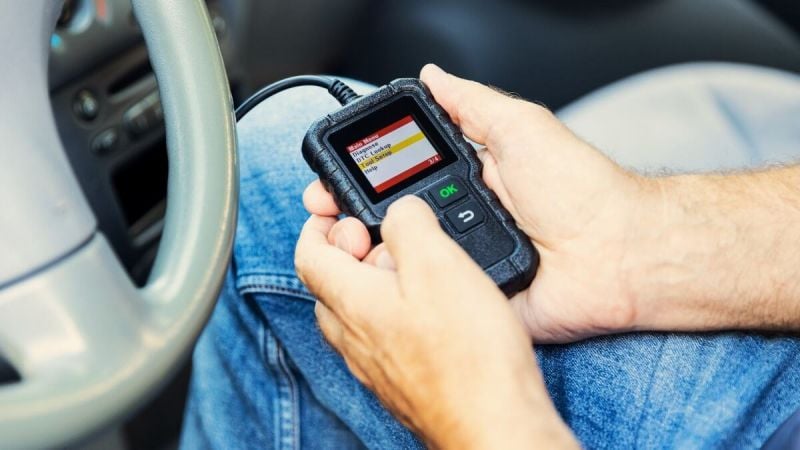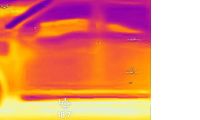For many car owners, the dreaded check engine light indicator on their car’s dashboard is not just about discovering that something is amiss with their car’s engine but is also a harbinger that a hefty car diagnosis and repair is almost always forecasted in their near future. But it needn’t always be that way.
In fact, ofttimes the check engine light signals a DIY repair you can diagnose with a little electronic code scanner (OBD-II or OBD-2) help, and a repair manual that will actually save you a significant amount of money.
What is an OBD2 Scanner?
In short, On-Board Diagnostics (OBD) systems are measurements and checks built within a vehicle’s engine and other systems to ensure that each system is operating as it should. If something is not operating within specific operational parameters, the system either has a built-in way to compensate for the operating condition and/or sends an alert out such as the check engine light on your vehicle’s dashboard.
In some cases that check engine light could be something as simple as a loose fuel tank cap. At worse, that check engine light could be letting you know that your engine is about to suffer from a catastrophic breakdown that could put you and your vehicle at risk of injury (even death) while driving down the road.
An OBD-I or -II scanner is an electronic tool designed to help you identify the trouble code responsible for the check engine light warning and in turn diagnose what is happening and at what component. The usefulness of this type of scan tool is that it can save you a lot of time diagnosing a car correctly and avoid firing the parts cannon until a fix is found.
OBD-I was introduced in the early 1980s. The limitations of it during the early years of On-Board Diagnostics systems is that it was primarily a manufacturer-specific system, meaning each car manufacturer had their own standards and protocols.
Today, a newer version called “OBD-2” is used on all makes and models of cars. It was introduced in the mid-1990s and became mandatory for all cars and light trucks sold in the United States starting with the 1996 model year. The benefit of this included:
- Enhanced diagnostic capabilities compared to OBD-I.
- It provided detailed information on engine and emissions systems.
- It led to standardized trouble codes (Diagnostic Trouble Codes, or DTCs) across all manufacturers, making it easier to diagnose issues.
How Much Do OBD2 Scanners Cost?
Automotive scan tools can be prohibitively expensive, easily running into the thousands of dollars. However, much more affordable versions of engine code scan tools can be found on the internet for under $100, albeit they do not possess the same number, or types of functions found in expensive scan tools that many professional mechanics use.
What is a Good Affordable Engine Scan Tool for the DIY Mechanic?
To find out what an under $100 scan tool can do for you was recently reviewed on the Project Farm YouTube channel where the host asks the question of whether a $15 scan tool can really work as well as one that costs $63.
Follow along with the host as he uses his 2003 Chevrolet Suburban as a test vehicle with a verified check engine light evaporative emissions trouble code and a 2008 Honda Civic with two (one engine and one transmission) verified trouble code problems to see how each of the OBD2 scanners compare against one another with a focus on:
- The codes detected and how long it took for the error code to display.
- The freeze frame function and how many button pushes were required to scroll to the desired info.
- Which scanners can be used to determine whether or not your car is ready to pass an emissions test.
- Which scanners provide “HOT KEYS” to expedite commonly used test functions.
- Which scanners provide fault-code interpretation for the user.
- Which scanners provide a graphical analysis of components (such as an oxygen sensor) identified by the trouble code.
- How each scanner compares with respect to screen display visibility.
- Which scan tools were successful with online software updating.
Spoiler Alert: In case you do not have time to watch the video, scroll down to just below the video for the top two affordable scanner tool recommendations focused on price and capabilities.
Best OBD 2 Code Scanner? Are All The Same? Let's Find Out!
The Spoiler: The $23 MOTOPOWER MP69033 and Ancel AD310 scanners performed well compared to the other brands. However, please note that paying more for a scanner (such as the $63 FOXWELL NT 301) typically performs just as well with the added benefit that you will receive more features that you might find useful for your diagnostic needs.
How to Use an OBD2 Code Scanner
Before rushing online to buy an OBD2 scan tool, I recommend taking a little extra money (about $35.95) and some extra time to peruse your personal copy of Automotive Diagnostic System’s: Understanding OBD-I & OBD-II from CarTech Books dot com. It is a very useful book that explains everything you need to know in order to diagnose your car’s problems when that check engine light appears on your dashboard or display screen.
According to the publisher of this manual:
Automotive Diagnostic Systems includes definitions of diagnostic trouble codes (DTCs) and a table of common DTCs. McCord reveals the intricacies of diagnosing the system, the importance of fixing component DTCs first, one- and two-trip codes, how the PCM erases DTCs…you learn how to resolve a range of common OBD-II problems such as:
- Engine misfires
- Shorts and open electrical circuits
- Out-of-tune fuel trims
- Dead catalysts
- Emissions leaks
- Low voltages
- Failed oxygen sensors
And much more including fuel injectors, ignition systems, chassis sensors and a variety of other sensors and their actuators.
For additional articles related to car diagnostics, here are a few for your consideration:
- Transmission Problem Diagnosis With This Simple Tool
- Simple Check for a Rough Running Ford F-150
- Toyota Tacoma Misfire Mystery Problem
Timothy Boyer is an automotive reporter based in Cincinnati. Experienced with early car restorations, he regularly restores older vehicles with engine modifications for improved performance. Follow Tim on Twitter at @TimBoyerWrites and Facebook for daily news and topics related to new and used cars and trucks.
COMING UP NEXT: Why Today’s Tesla Cybertruck is a Failure
Image source: Deposit Photos











